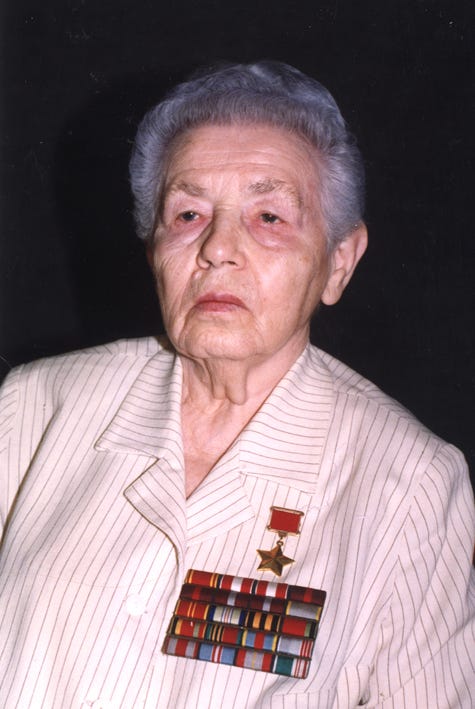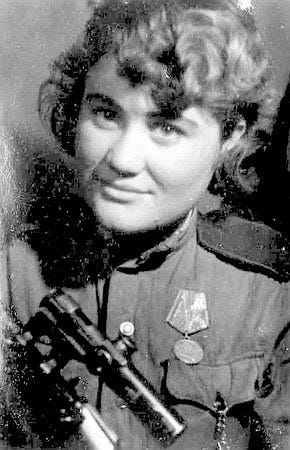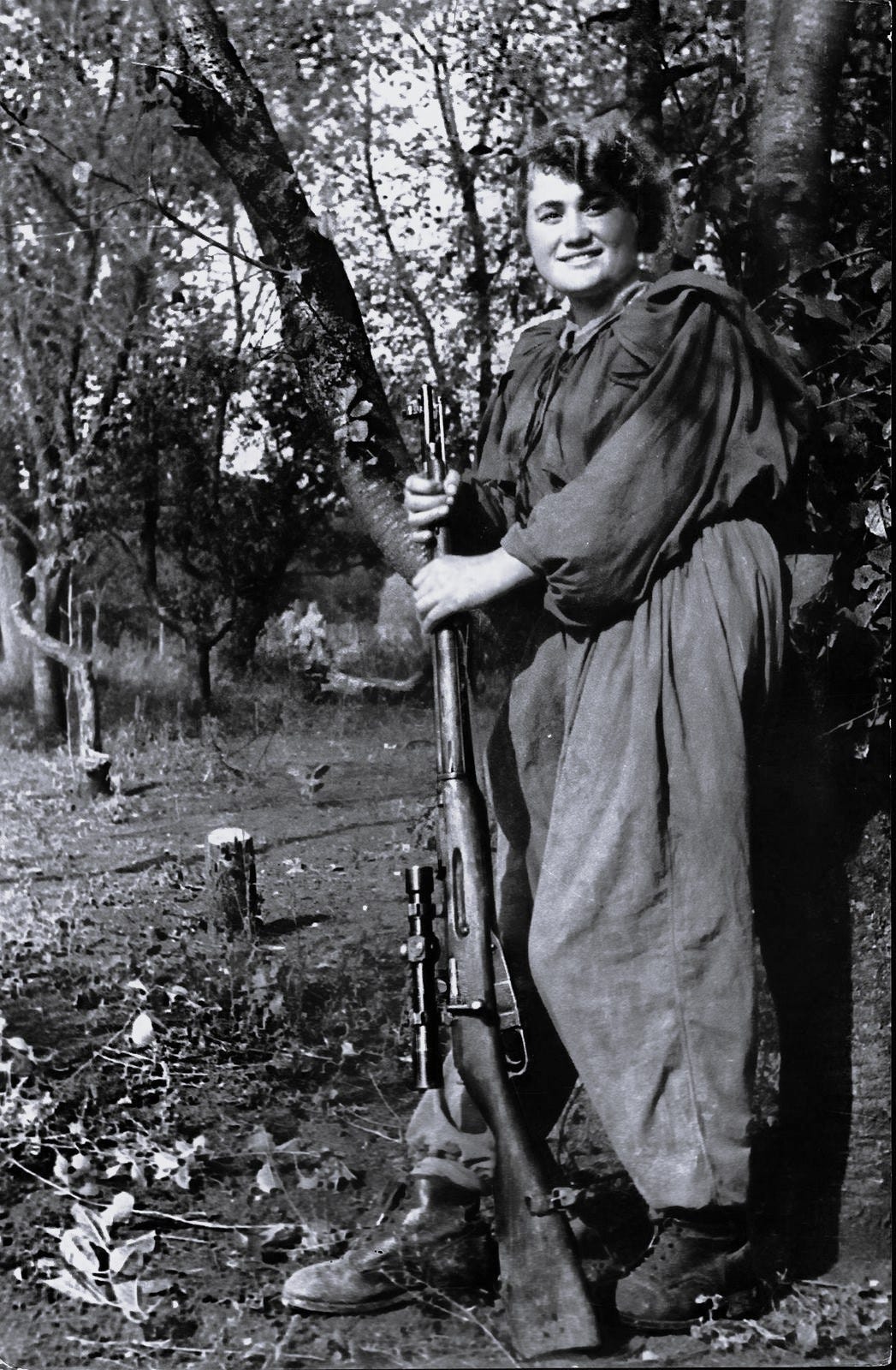Polina, Nina & Art
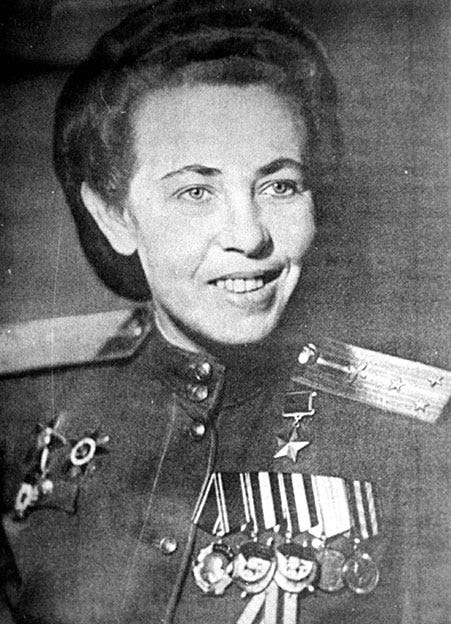
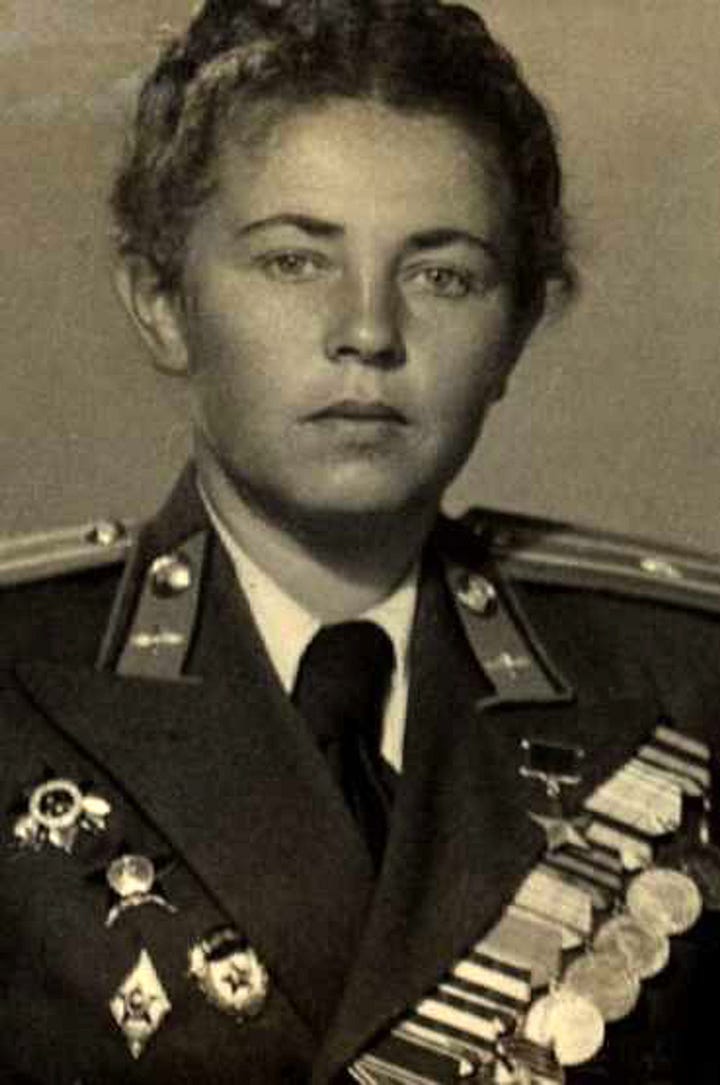
Polina Gelman was born on October 24, 1919 in Berdychiv, Ukraine. In 1938, she graduated from the Gomel glider school. She briefly attended Moscow State University before enlisting in the Red Army and being recruited by Marina Raskova in 1941. Gelman trained at the Engels Military Aviation School and was deployed to the Southern Front in May 1942 as a “Night Witch” - the 588th Night Bomber Regiment. That next year, she began flying as Raisa Aronova’s navigator. Gelman completed 857 sorties by the war’s end and was awarded the Hero of the Soviet Union in May 1946. She is the only Jewish woman to achieve that distinction.
After the war, Gelman continued in the military as a translator. She graduated from the Military Institute of Foreign Languages in 1951, where she studied Spanish. She had a daughter, whom she named Galya after her friend and fellow servicewoman, Galya Dokutovich. Gelman retired from active service in 1957, achieving the rank of major, and completed a doctorate in economics. For two years, she worked in Cuba as an advisor and translator. Gelman then worked as a political economy instructor at the Institute of Social Sciences until 1990. She died in Moscow on November 25, 2005.
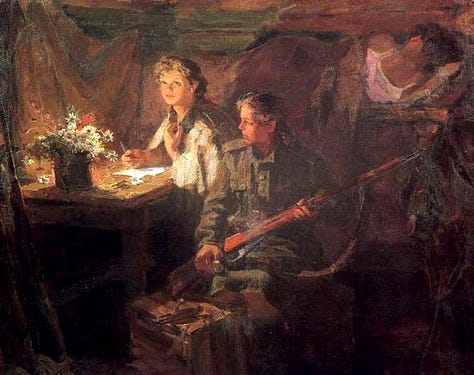
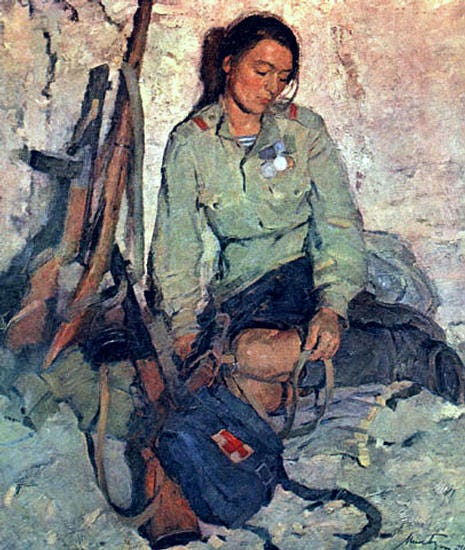
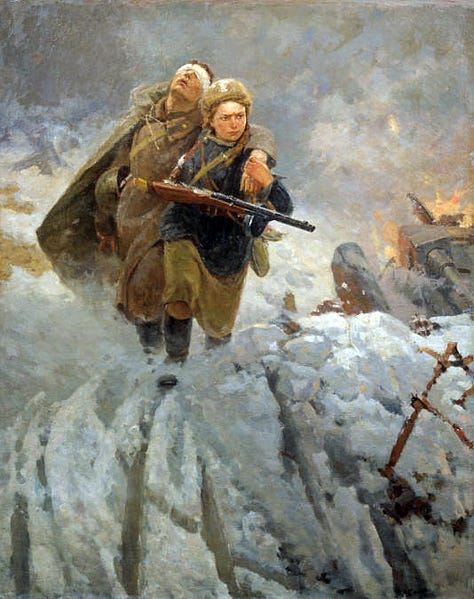
Artwork: Another Tool for Historians
I recently wrote a short article about how historians can use artwork as primary sources based on my previous research topic of combat art. Before I chose to research Soviet women in combat, I was going to write my thesis on combat art in World War II. This is just a quick taste of that subject, linked above.
Nina Slonova joined the Red Army in 1942 as a sniper. She was assigned to the 2nd Infantry Battalion of the 647th Infantry Regiment. By February 1944, at least 69 kills were attributed to Slonova. Her final kill count is estimated to be between 124 and 170. She survived the war and was demobilized in 1946. Not much is known about her service beyond these basics. Slonova was awarded the Order of the Patriotic War in March 1985.



